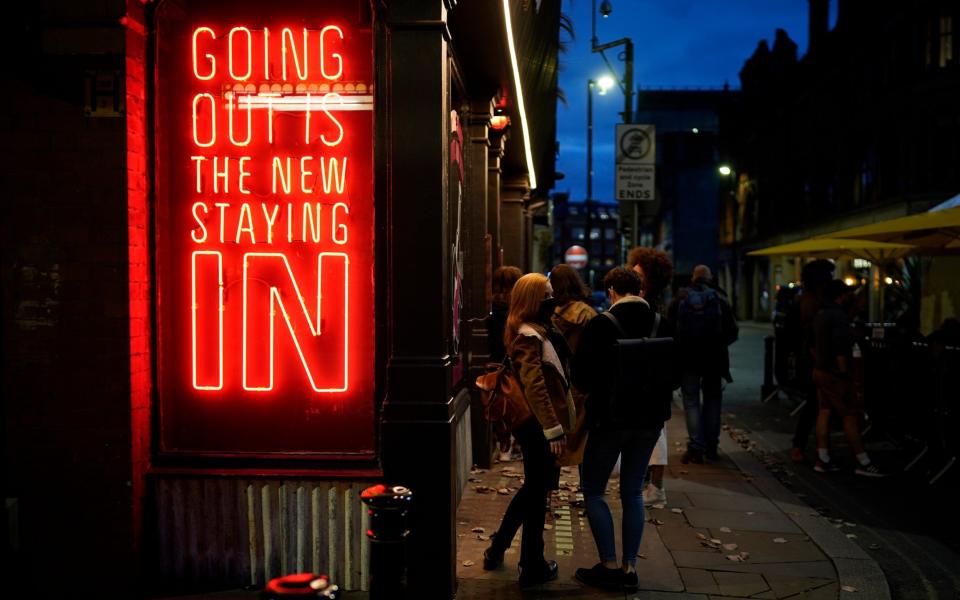Tier 4 lockdown: what would the rules be, and what UK areas could be affected?


The Government will "rule nothing out" on the prospect of a new fourth tier of restrictions, Health Secretary Matt Hancock has said.
Officials are drawing up fresh plans to add an extra lockdown level, which could see restaurants and non-essential shops shut in the event infection rates in England fail to drop.
The fourth tier is thought to be viewed as a short-term option, which could be deployed instead of national circuit-breaker restrictions in order to get under control the spread of the virus.
The Scottish Government has opted for a five-tier model in which Level 4 is closer to the full lockdown.
Why do we need a Tier 4?
In August, the Department for Education published a four-tier structure, in which all educational institutions – including primary schools and early years settings – would be shut. Existing Tier 3 measures include the closure of pubs and bars that do not serve food, topped up by shutting gyms, soft play centres and casinos.
Asked about it on October 26, the Health Secretary told BBC Breakfast: "We've always said that we take nothing off the table. Having said that, we have seen the rise in the number of cases has slowed a bit.
"The problem is it's still going up, and while it's still going up we've got to act to get it under control. We rule nothing out, but at the moment the three-tier system is what we're working to and it's effective in slowing the growth of this virus but it hasn't brought this curve to a halt."
Government scientists including Prof Chris Whitty (see video below), the chief medical officer, have warned that the "base line" Tier 3 restrictions were unlikely to be enough to bring down the R rate alone.
Which areas might go into Tier 4?
The Liverpool mayor, Joe Anderson, has backed the idea of a possible fourth tier of coronavirus restrictions if Tier 3 measures do not go far enough to halt the spread of Covid-19.
Mr Anderson, whose brother Bill was one of 61 people to die with the virus in the city in one week, said he would support "tougher measures if necessary".
He told BBC Breakfast on October 27: "It has taken untold damage on people's wellbeing and a huge toll on families where people have died. If anything was required to bring it down faster I would do that.
"However, I want to make sure that we are giving Tier 3 a chance to see if the measures have an impact."
He added he would review the results of the Tier 3 restrictions in 14 to 16 days' time. Areas already in Tier 3 would be most likely to be moved up.
As of October 27, these are the areas of Liverpool and Merseyside (including Knowsley, The Wirral, St Helens, Sefton and Halton), Lancashire and Greater Manchester, South Yorkshire (including Sheffield, Doncaster, Barnsley and Rotherham) and Warrington.
The whole of Nottinghamshire (including Ashfield, Bassetlaw, Broxtowe, Gedling, Mansfield, Newark and Sherwood, Nottingham and Rushcliffe) is set to move to Tier 3 restrictions with additional measures at 12:01 am on Friday, October 30.

What are the current Tier 3 restrictions?
Pubs and bars must close, and can only remain open where they operate as if they were a restaurant – which means serving substantial meals, like a main lunchtime or evening meal. They may only serve alcohol as part of such a meal
Wedding receptions are not allowed
People must not meet anybody outside their household or support bubble in any indoor or outdoor setting, whether at home or in a public space. The 'rule of six' applies in open public spaces, such as parks and beaches
People should try to avoid travelling outside the ‘very high’ area they are in, or entering a ‘very high’ area, other than for things such as work, education, accessing youth services, to meet caring responsibilities or if they are in transit
People should avoid staying overnight in another part of the UK if they are resident in a ‘very high’ area, or avoid staying overnight in a ‘very high’ area if they are resident elsewhere
Nottinghamshire will move to the highest tier on Friday, 30 October, and the Department of Health said it had agreed further measures with local leaders alongside the pre-existing Tier 3 rules.
This means all hospitality venues in the area, including cafes and restaurants, can only remain open to offer substantial meals, or must move to operate a delivery and takeaway service only.
Betting shops, car boot sales and auction houses must close, as well as tattoo parlours, tanning and nail salons, and piercing services. Leisure and sporting facilities, including gyms, can remain open.
Matt Hancock said: "We have seen infection rates rising sharply across Nottinghamshire, and in close collaboration with local leaders we have agreed on a package of local measures to stop this virus in its tracks.
"I understand how difficult life is under these restrictions and the impact they have on families and businesses, but we never take these decisions lightly.
"I want to thank local leaders for their continued support and to extend my gratitude to the people of Nottinghamshire who have shown real resilience, consistently working together to follow the rules and help bring down rates of infection."
Under a distinct tier system created by the Department for Education, all educational institutions, including primary schools and early years settings, would be shut.
When will Tier 4 restrictions come in?
Matt Hancock ruled nothing in or out when he was asked about moving into a possible Tier 4 on the 26 October, but it is thought new restrictions could be introduced in some parts of the country as early as November.

